|
More Muscle Injury Facts:
One common cause of muscle aches and pain is fibromyalgia, a condition that includes tenderness in your muscles and surrounding soft tissue, sleep difficulties, fatigue, and headaches
Muscle pain may also be caused by certain drugs, including ACE inhibitors and statins. ACE inhibitors are widely used for lowering blood pressure and statins for lowering cholesterol
Incomplete healing and re-injury can lead to a build up of scar tissue in the muscle causing further injury.
Home Conservative Guidelines: - Rest
- Use cold reduce pain, swelling.
- Use TShellz Wrap® treatments to increase blood flow in the treatment area.
- Once swelling is reduced and healing has begun, start stretching the injured joint after warming up with a TShellz Wrap®. (stretching=good, straining=bad)
Typical characteristics of a muscle injury are bruising, weakness, muscle tightness and the inability to stretch the area
|
Sprains and Strains:
What's the Difference?
What is a Sprain?
A sprain is a stretch and/or tear of a ligament (fibrous band of connective tissue that joins bone to bone). Every joint in the body is stabilized and supported by a ligament. They help control range of motion and enable us to complete simple tasks such as walk and run.
What is a Strain?
A strain is an injury of a muscle and/or tendon. Tendons are fibrous cords of tissue that attach muscles to bone.
Overview
Sprains and strains are among the most common injuries in sports, professional, amateur athletes and the general public. You are more at risk for the injury if you have a history of sprains and strains, are overweight, and are in poor physical condition.
Sprains and strains are categorized according to severity:
- MILD - A muscle is stretched in a mild sprain, but there is no joint loosening.
- MODERATE - A moderate sprain partially tears the muscle, producing joint instability, and some swelling.
- SEVERE - A severe sprain produces excruciating pain at the moment of injury, as muscle tear completely, or separate from the bone. The complete rutupre makes the joint nonfunctional.
You should seek medical attention if you can't walk more than four steps without pain, can't move the affected joint or have numbness in any part of the injured area.
STRAINS: What Are The Signs Of A Strain?
Signs of strain include pain, muscle spasm, muscle weakness, swelling, inflammation, limited ability to move the affected muscle, and cramping. With a mild strain, the muscle/tendon is stretched or pulled, slightly. Some muscle function will be lost with a moderate strain, where the muscle/tendon is overstretched and slightly torn. In severe strains, the muscle and/or tendon is partially or completely ruptured, often disabling the person.
Common strains include:
- Achilles tendon strain Pain will be felt along the back of your foot and above your heel, especially when stretching your ankle or standing on your toes. Most strains are mild. The seriousness of the strain will affect your walking. Suddenly increase your activity or warm up improperly can cause an Achilles tendon strain. Trying to go fast, jumping (hurdles), cutting (football) or twisting in the air are just some of the scenarios where you could develop Achilles tendon strain.
- Back strain When the muscles that support the spine are twisted, pulled, or torn, the result is a back strain. Athletes who engage in a lot jumping (during basketball, volleyball, etc.) are at risk to this injury. Everyday activities can lead to back strain, pickup a heavy item and twisting at the same time as in loading groceries into the car, carrying laundry up stair and turning too quickly.
- Hamstring muscle strain A hamstring muscle strain is a tear or stretch of a major muscle in the back of the thigh and can sideline a person for up to six months. The likely cause is muscle strength imbalance between the hamstrings and the muscles in the front of the thigh, the quadriceps. Sports involving activities such as kicking a football, running, or leaping to make a basket can pull a hamstring. Unfortunately, hamstring injuries have one of the highest rates of reinjury, so it is important to heal fully and ensure you correct any symptomatic causes such as lack of proper stretching or muscle imbalance. You can view much more in-depth information about the hamstring at aidyourhamstring.com.
- Quadricep strain This is muscle strain found in the front thigh (quadriceps muscles are in the front, and the adductor muscles are on the inside). The hamstring and quadriceps muscle groups are particularly at risk for muscle strains because they cross both the hip and knee joints. Quadriceps are also used for high-speed activities, such as track and field events (running, hurdles, long jump), football, basketball, and soccer. Read more about a thigh muscle injuries.
- Calf strain This occurs when you have stretches, tears, or an incomplete rupture of one of the large calf muscles (gastrocnemius) in your lower leg. Also called 'Tennis leg', calf strain happens when lunging or pushing off one leg. This often occurs in sports but can also happen in daily activities, such as running to catch a bus or climbing stairs. The feeling is described much like being kicked in the leg from behind but when turning around to see who kicked you, you discover that no one is there.
- Elbow strain A strain occurs when a muscle and/or tendon becomes overstretched and tears. This painful injury, also called a "pulled muscle," can be caused by an accident, improper use of a muscle, or overuse of a muscle. Elbow strains frequently occur in racquet, throwing, and contact sports.
- Shoulder strain. The deltoid muscles in your shoulders are commonly sprained as they deal with a lot of force and leverage. Your shoulders are considered one the most movable joints in your body; overuse, repetitive motion or an unnatural twisting of the shoulder are common causes of shoulder strain. Shoulder strains arise quite often the due to swelling, which can make almost any movement in the cavity of the shoulder joint both difficult and uncomfortable. Read more about deltoid muscle injuries
- Hand strain Repetitive strain injuries are linked with work related usage of the hands. A tight grip or squeezing of the hand overstretches the hand muscles. Women are at high risk of hand strain, as 'standard' hand tools are often too large, too wide or too slippery. Sports such as gymnastics, tennis, rowing, golf-sports that require extensive gripping-have a high rate of this particular type of strain.
- Neck strain Neck strain is typically not considered an extremely serious injury, but there is pain and dysfunction of the neck. Causes of neck strain are too much time in an awkward position (hunched over a steering wheel while driving, hunched forward to view a computer monitor, or cradling a phone in the crook of the neck). Neck strain can arise for those that sleep in a position that strains the neck, such as with a pillow that is too high or too firm. Further to this, neck strain also shows up due to people carrying a heavy suitcase or other object on one side of the body.
SPRAIN: What Are The Signs Of A Sprain?
While the intensity varies, pain, bruising, swelling, limited ability to move the affected joint, and inflammation are common to all three categories of sprains: mild, moderate, and severe. You may feel a tearing or hear a 'pop' sound in the joint.
Causes of Sprains
A sprain is caused by direct or indirect trauma (a fall, a blow to the body, etc.) that knocks a joint out of position, and overstretches, and, in severe cases, ruptures the supporting ligaments. This injury occurs when an a person lands on an outstretched arm; slides into a base; jumps up and lands on the side of the foot; or runs on an uneven surface.
Common sprains include:

Our online shop accepts Visa & Mastercard as well as a Paypal Payment option.
We also encourage your to Call Our Office at 1-866-237-9608 (toll free continental NA) where we can answer any questions you have and/or take your order via phone.
Product specialists are available 9:00 am to 5:00 pm Eastern Standard Time Monday to Friday. If any question or concern arises, call us or simply send us an email at any time (we check our emails constantly all throughout the day and night.. even on holidays!). We will respond as soon as possible. North America Toll Free 1-866-237-9608
Outside North America +1-705-532-1671
Learn More About Muscle Injuries & TreatmentsI want to learn more about Post-Surgery Recovery I want to learn more about muscle injury home treatment using the TShellz Wrap® I want to learn more about Ice & Heat: Which Is Better For Muscle Strains/Spasms? Do I Need Muscle Surgery?
FREE SHIPPING ON ALL PRODUCTS CURRENTLY ENABLED
During your recovery, you will probably have to modify and/or eliminate any activities that cause pain or discomfort at the location of your soft tissue injury until the pain and inflammation settle. Always consult your doctor and/or Physical Therapist before using any of our outstanding products, to make sure they are right for you and your condition. The more diligent you are with your treatment and rehabilitation, the faster you will see successful results!
Living with pain is never easy and we encourage you to call us with any questions you have related to your hamstring injury. We will do our best to help.
Available Monday to Friday
|
Muscle Injury Facts:
There are approximately 639 muscles in the human body
Muscle aches and pains are common and can involve more than one muscle
Muscle pain also can involve ligaments, tendons, and fascia, the soft tissues that connect muscles, bones, and organs
Oral medications can mask the pain but do not aid in the healing of a muscle injury. Anti-inflammatories and pain killers can cause muscle related injuries to worsen
Muscle pain also can be a sign of conditions affecting your whole body, like some infections and disorders that affect connective tissues throughout the body
Most common cause of muscle aches & pains: - Injury or trauma including sprains and strains
- Overuse: using a muscle too much, too soon, too often
- Tension or stress

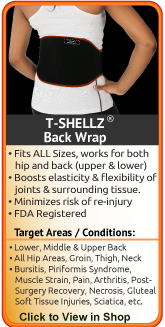  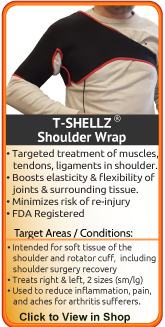 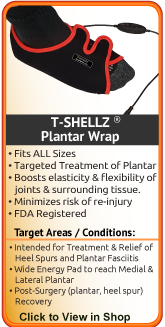   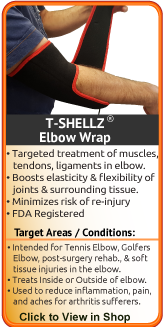 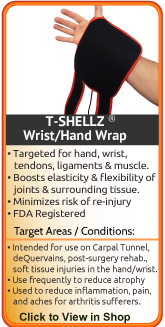   |